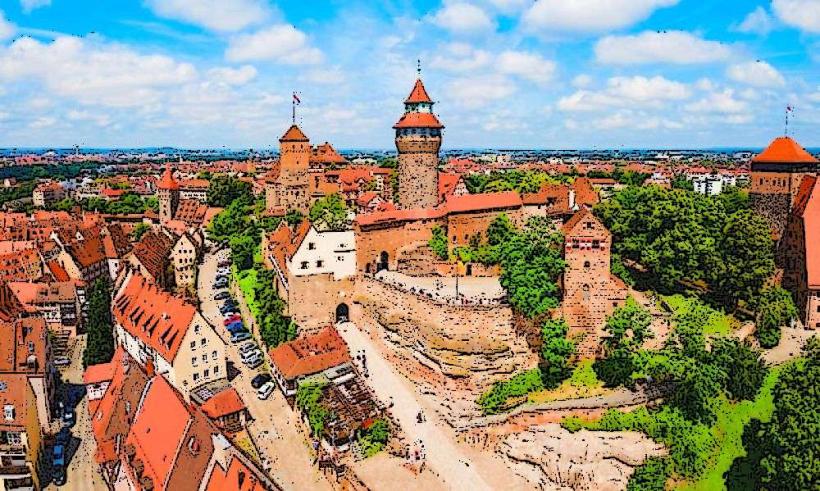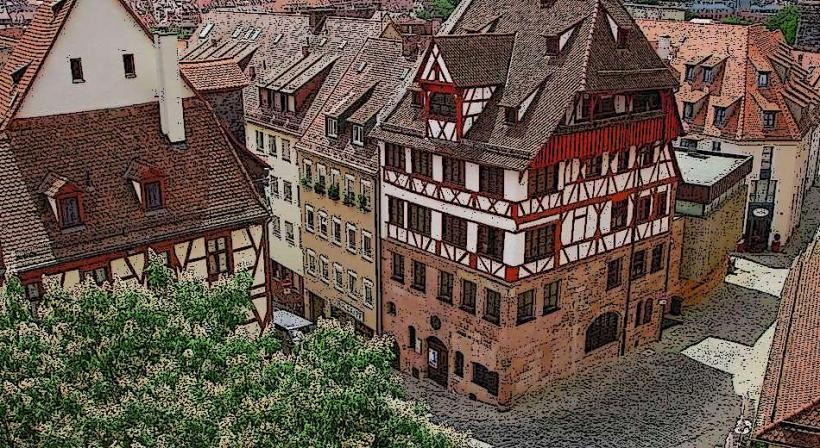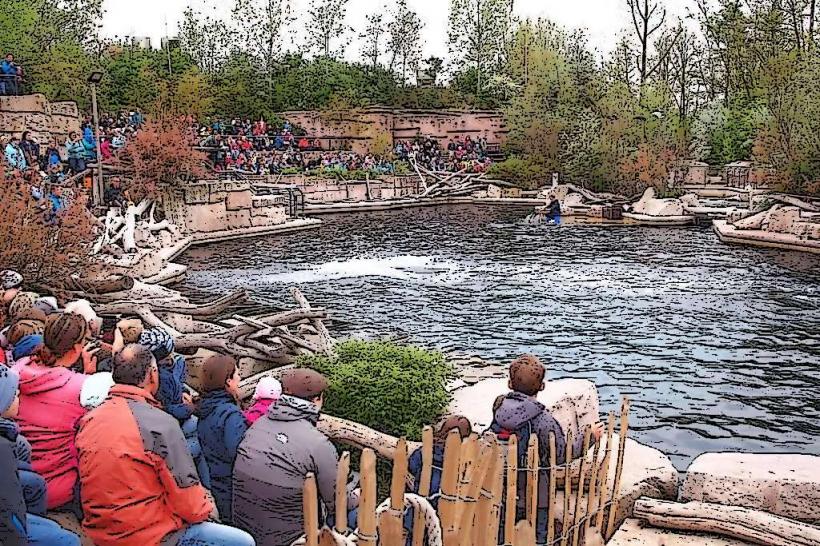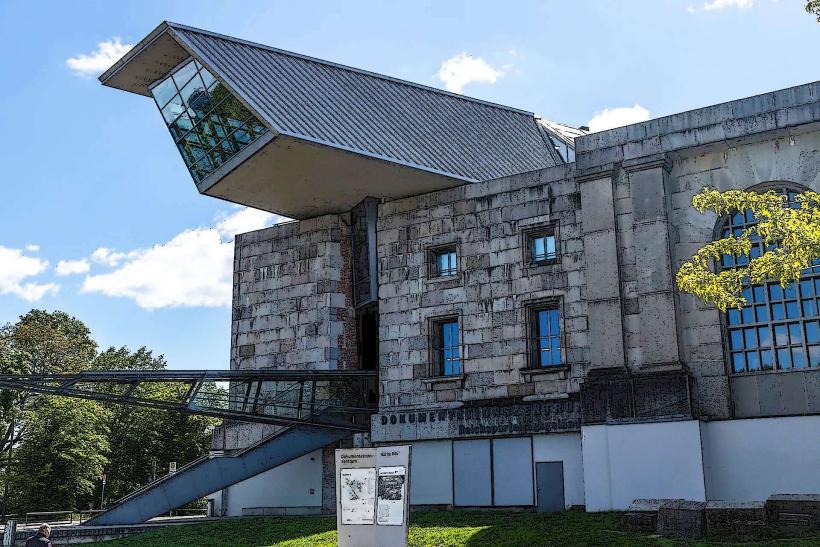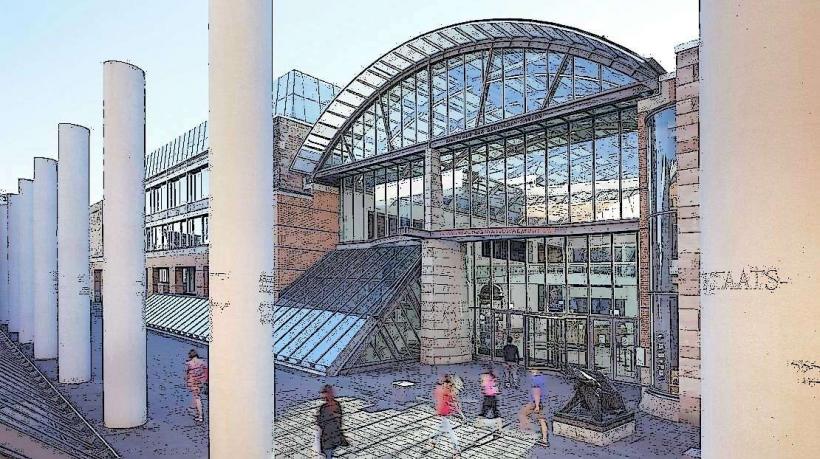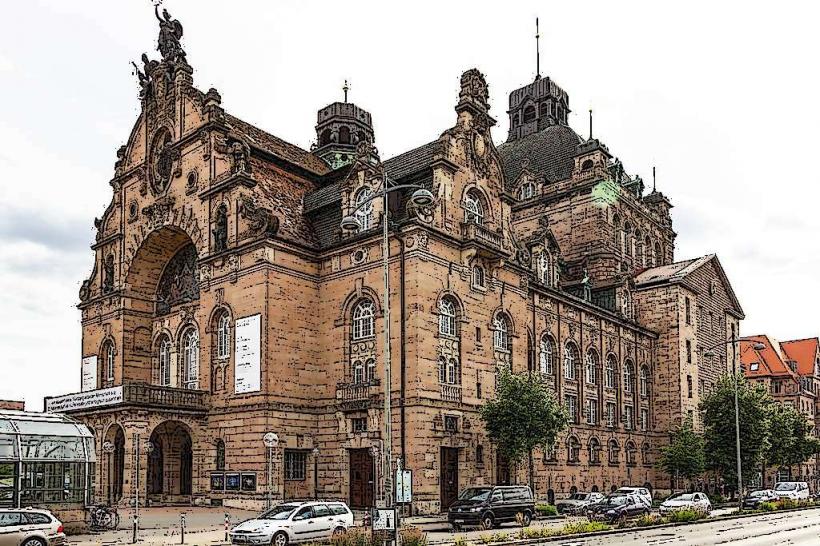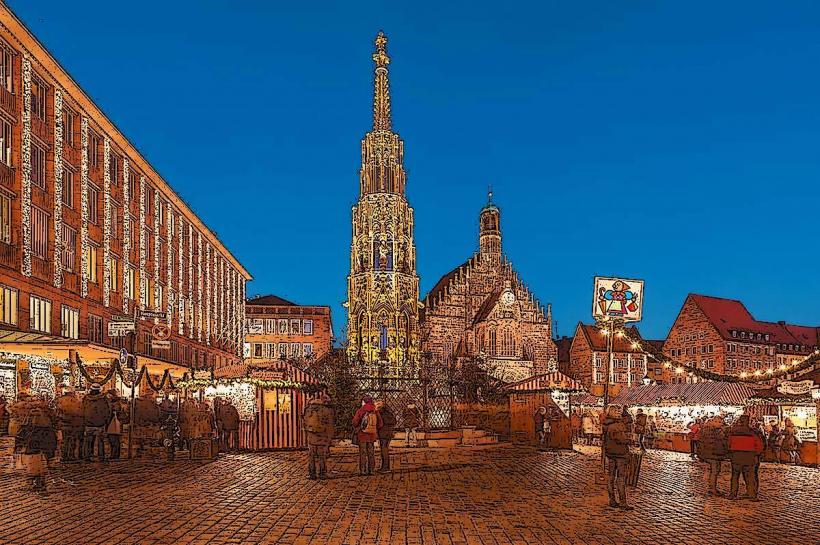Information
Landmark: Saint Lorenz ChurchCity: Nuremberg
Country: Germany
Continent: Europe
St. Lorenz Church (in German, Lorenzkirche) is one of the most prominent landmarks in Nuremberg, Germany, and a remarkable example of Gothic architecture. Located in the heart of the Old Town, this historic church has played a central role in the city’s religious and cultural life for centuries. It is one of Nuremberg's most important religious buildings, alongside St. Sebaldus Church, and is a must-visit for those interested in history, architecture, and art.
Historical Significance
- Foundation and Construction: The construction of St. Lorenz Church began in 1270 and continued for over a century. The church was completed in 1477. It was originally built to serve as a parish church for the working class of Nuremberg. Over the years, it became a central place for worship and a symbol of the city’s wealth and importance during the late medieval period.
- Role in the Reformation: Like many churches in Germany, St. Lorenz Church was deeply affected by the Reformation in the 16th century. In 1525, the city of Nuremberg officially adopted Lutheranism, and the church became a Protestant house of worship. The church played an important role in the religious and political changes during this period.
- War Damage and Restoration: St. Lorenz Church suffered significant damage during World War II, particularly during air raids that targeted the city in 1944. The church's roof was destroyed, and much of the interior was damaged. However, the church was carefully restored after the war, and many of its artistic features were rebuilt or preserved.
Architectural Features
St. Lorenz Church is a prime example of Gothic architecture, with intricate stonework, soaring spires, and remarkable attention to detail. Some of the most striking features of the church include:
Exterior and Façade:
- The exterior of St. Lorenz Church is a stunning example of Gothic architecture, with its tall, slender spires reaching towards the sky. The twin towers at the west end of the church dominate the Nuremberg skyline and make the church one of the most recognizable buildings in the city.
- The main façade is adorned with elaborate sculptural details depicting scenes from the Bible, saints, and various religious figures. It also includes archways, buttresses, and flying buttresses, which are characteristic of the Gothic style.
- The rose window on the church's façade is another striking feature. It is a large, intricate stained-glass window that depicts the Last Judgment and is a prime example of medieval craftsmanship.
Interior and Nave:
- Inside the church, the soaring vaulted ceilings and columns create a sense of awe and grandeur. The church's interior is characterized by its high, pointed arches, which are typical of Gothic design and help create a light, airy atmosphere despite the church's massive size.
- The nave is particularly impressive, stretching nearly 80 meters in length. The wooden pews and stone flooring are arranged to reflect the church's religious and functional purpose.
Stained Glass Windows:
- The church contains several stained glass windows, many of which date back to the 14th and 15th centuries. These windows depict biblical stories and saints, and they add a sense of color and spiritual significance to the interior. One of the most notable windows is the "Passion Window", which illustrates scenes from the Passion of Christ.
Altar and Organ:
- The church is home to a magnificent high altar, which was created by the sculptor Veit Stoss in the late 15th century. The altar is one of the most famous examples of Gothic sculpture and features scenes from the life of Christ, including the Crucifixion and Resurrection. The altar is a masterpiece of wood carving and is considered one of the most important works of art in Nuremberg.
- The organ at St. Lorenz Church is a stunning feature. Built in 1726 by Johann David Sieber, it is one of the oldest organs in Nuremberg and is still used for services and concerts today. The instrument is renowned for its sound and is an important part of the church's music tradition.
Sculpture and Artwork:
- The church contains a number of significant works of art, including wooden sculptures, paintings, and frescoes. These works often depict biblical themes and religious figures, and they are integral to the church's role as a place of worship and contemplation.
Tomb of the Imperial Family:
- St. Lorenz Church also contains the tomb of the imperial family. The **tomb of the Holy Roman Emperor Friedrich III is located in the church. This royal connection further emphasizes the church’s importance during the medieval and early modern periods.
Role in the Community
St. Lorenz Church has been a central part of the religious life of Nuremberg for centuries. As a Lutheran church, it continues to serve the local community as a place of worship and reflection. It also plays a key role in cultural events, including Christmas services, concerts, and festivals.
The church is especially famous for its annual Christmas Eve service, which attracts thousands of visitors from around the world. The St. Lorenz Church Choir regularly performs choral works, and the church hosts organ concerts and classical music performances. Its location in the heart of Nuremberg’s Old Town makes it an integral part of the city’s cultural and architectural heritage.
Visiting St. Lorenz Church
- Location: St. Lorenz Church is located at Lorenzer Platz, in Nuremberg's Old Town, not far from other major landmarks such as Nuremberg Castle and Albrecht Dürer’s House.
- Opening Hours: The church is typically open to visitors daily, although the hours can vary depending on services and events. It's generally open from 9:00 AM to 6:00 PM.
- Admission: Entry to the church is free, though there may be a small fee for access to the crypt or for special events and concerts.
- Accessibility: The church is easily accessible by foot from other parts of the Old Town. Public transport options are also available, with nearby bus and tram stops.
Conclusion
St. Lorenz Church is a magnificent example of Gothic architecture and a vital part of Nuremberg's cultural and religious heritage. Whether you are interested in medieval art, religious history, or simply appreciate stunning architecture, a visit to this iconic church is a must. From its impressive façade and towering spires to its beautiful stained glass windows and significant artworks, St. Lorenz Church offers visitors a glimpse into Nuremberg's medieval past and its rich spiritual life.

